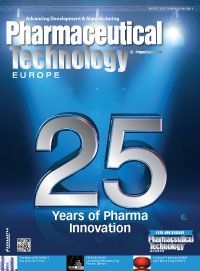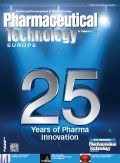Continuous Manufacturing—the Future of Pharmaceutical Manufacturing
Pharmaceutical Technology Europe
Continuous manufacturing is key to the future of pharmaceutical manufacturing.

Surveying the Landscape of Solid-Dosage Manufacturing
Experts take a look at the journey travelled thus far and where pharmaceutical manufacturing is heading over the next decade.
The development of small-scale, continuous manufacturing systems will be one of the most significant changes in the pharmaceutical industry in the next 10 years. These agile systems will enable commercial manufacturing processes to be developed in much less time, using less product during development and scale-up, but with much greater process understanding.

Pharmaceutical Technology Europe25th Anniversary Issue
For more than 20 years, the batch-based production of blockbuster solid dosage forms dominated the industry. Profitability was such that companies were not incentivised to innovate or risk developing new manufacturing technology. In the post-blockbuster era, however, it is increasingly recognised that material costs during drug development are significant, new drug products are likely to be manufactured in much smaller quantities and that, for some novel therapies, the timely development of a commercial manufacturing process may be critical.
Such pressures have put the costs, risks and timelines associated with traditional batch-based development and manufacturing under scrutiny. In most industries, continuous manufacturing is seen as the low-cost solution to producing low-value, high-volume products for which there is little need to focus on the cost of materials used in process development and, often, little need for product changeover.
Nonetheless, the opportunity to obtain more data from less product during development and eliminate the cost and risk of batch-based “scale-up” has inspired the introduction of small-scale, continuous equipment that can process small quantities of material during R&D while also being able to operate for variable lengths of time to match market demand during commercial production.
Regulators are increasingly supportive of continuous manufacturing, and manufacturers are recognising that current quality assurance costs are disproportionately large compared with other industries, in which true Six Sigma production capability means that the requirement for end-of-line testing and the removal of out-of-specification product is effectively eliminated. Potential API savings of more than 60% and time-to-market reductions of more than a year have been identified by companies using small-scale continuous-manufacturing systems. In 10 years, the vast majority of tablets will be produced on continuous manufacturing lines that are installed in modular facilities that are a fraction of the size of current plants.

About the Author
Trevor G. Page is group technical director of GEA Pharma Systems.

Drug Solutions Podcast: A Closer Look at mRNA in Oncology and Vaccines
April 30th 2024In this episode fo the Drug Solutions Podcast, etherna’s vice-president of Technology and Innovation, Stefaan De Koker, discusses the merits and challenges of using mRNA as the foundation for therapeutics in oncology as well as for vaccines.
Pharmaceutical Tariffs Are Imminent: How Industry is Bracing for Impact
April 16th 2025On April 14, 2025, the Trump Administration launched a national security-driven investigation into pharmaceuticals, a move that will likely result in tariffs being placed on pharmaceutical drugs, ingredients, and other components that are imported from outside of the United States.